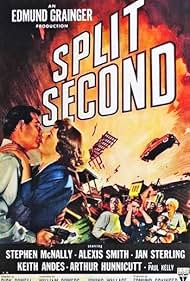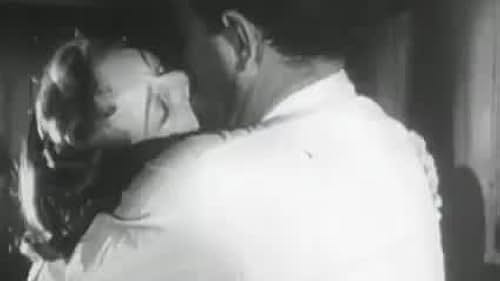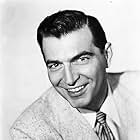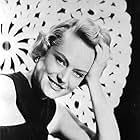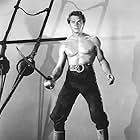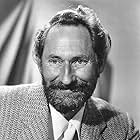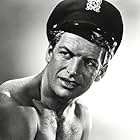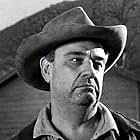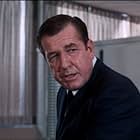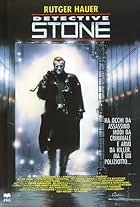VALUTAZIONE IMDb
6,8/10
2139
LA TUA VALUTAZIONE
Aggiungi una trama nella tua linguaThree hardened criminals take hostages and hide in a Nevada mining ghost town, knowing that an atom bomb is scheduled to be tested there the next morning.Three hardened criminals take hostages and hide in a Nevada mining ghost town, knowing that an atom bomb is scheduled to be tested there the next morning.Three hardened criminals take hostages and hide in a Nevada mining ghost town, knowing that an atom bomb is scheduled to be tested there the next morning.
Frank DeKova
- Dummy
- (as Frank de Kova)
Fred Aldrich
- Hunter Driver
- (non citato nei titoli originali)
Benny Burt
- Hunter
- (non citato nei titoli originali)
John Cliff
- Gas Station Attendant
- (non citato nei titoli originali)
Dick Crockett
- Air Force Helicopter Pilot
- (non citato nei titoli originali)
John Diggs
- Colonel at Control Station
- (non citato nei titoli originali)
William Forrest
- Colonel Wright
- (non citato nei titoli originali)
Fred Graham
- A.F. Captain in Helicopter
- (non citato nei titoli originali)
Karen Hale
- Nurse
- (non citato nei titoli originali)
Clark Howat
- Lieutenant at Control Station
- (non citato nei titoli originali)
Trama
Lo sapevi?
- QuizThe escaped convict Bart Moore is played by Paul Kelly, who himself spent 25 months during the late 1920s in California's San Quentin State Prison. He was convicted of manslaughter for the beating death of actor Ray Raymond, the first husband of actress Dorothy Mackaye, who was having an affair with Kelly and would later marry him. Kelly's next film was Duffy of San Quentin (1954), where he plays the title role - the warden of the prison where he himself did time.
- BlooperConsidering the level of security around the test site, including the number of roadblocks set up to keep people away, it should have been impossible for Dr. Garven to drive into the ghost town seemingly unimpeded.
- Citazioni
Larry Fleming: [referring to Dottie's mother] Six husbands, and you're still working on your first.
Dorothy 'Dottie' Vail: Mother used up all the men we knew.
- ConnessioniFeatured in Noir Alley: Split Second (2017)
Recensione in evidenza
The genre of film-noir can be divided into three eras - generally speaking: the classic era (1940-1945), the postwar era (1945-1953) and the Cold War era (1953-1958-60?). Film-noir was always a genre about fear, moral complexity and desperation. When the WWII film-noir exuded postwar disillusions; the concrete war was over but it was still going on on social level: in our minds and in the society. What genre would fit more perfectly to the ages of paranoia and fear than the genre of them, film-noir. To my mind Split Second is the first Cold War film-noir - a statement which one could argue about because in the same year 1953 Samuel Fuller made a film-noir about paranoia and the fear of communism Pickup on South Street (1953).
Dick Powell was the star of the Hollywood musicals in 1930's. In 1940's he tried to change his image from a singing dancer to the new bad boy of Hollywood. In 1944 Edward Dmytryk directed Murder, My Sweet based on a novel by Raymond Chandler and casted Dick Powell to play Philip Marlowe - the greatest private eye of film-noir, but the performance by Powell is often left in the shadows of Humphrey Bogart's Philip Marlowe interpretation in The Big Sleep (1946). After the war Dick Powell had some experience from film-noir and he chose to try directing as well. Split Second was his debut of the six films he directed and I think he succeed quite well in it.
1950's was the age when the government of the United States made a lot of nuclear weapon experiments: in the deserts of US and in the famous Bikini island. This offered a chance to make a thriller around these kind of events and Split Second represents the attempt of transforming film-noir from its usual big city milieus to a deserted town in Nevada under the fear of the war. Three men have just escaped from prison, unaware of the nuclear experiments of the government. Soon the group of three takes a few hostages in result of getting a doctor because one of the escapees is injured. As time goes on in the deserted town the hostages start to lose their morality and the time before the explosion is running out.
The aesthetics of film-noir were often related to big cities like New York or Los Angeles and exotic milieus were always part of the genre but usually they meant bars in Chinatown, motels of Arabia or the cold streets of Shanghai. In 1950's many tried to transform film-noir to new milieus: to snowy conditions (On Dangerous Ground), to the narrow halls of a train (The Narrow Margin) and to the back seats of a car (The Hitch-Hiker). To me Split Second represents the attempt of transforming film-noir to deserted towns, which The Hitch-Hiker (1953) did as well, but Split Second also tried to bring film-noir to the Atomic Age.
There's no question whether this is a high quality noir or a B-class film. The latter can be seen in its conventional direction, low budget and it has got a great number of unknown actors. But the way I see it Split Second is alongside with all the b-class Mitchum films one of the bests. It's a great example of Cold War films and how the Atomic Age affected cinema. It's an entertaining thriller but also a fine survey of the disappearance of morality.
Dick Powell was the star of the Hollywood musicals in 1930's. In 1940's he tried to change his image from a singing dancer to the new bad boy of Hollywood. In 1944 Edward Dmytryk directed Murder, My Sweet based on a novel by Raymond Chandler and casted Dick Powell to play Philip Marlowe - the greatest private eye of film-noir, but the performance by Powell is often left in the shadows of Humphrey Bogart's Philip Marlowe interpretation in The Big Sleep (1946). After the war Dick Powell had some experience from film-noir and he chose to try directing as well. Split Second was his debut of the six films he directed and I think he succeed quite well in it.
1950's was the age when the government of the United States made a lot of nuclear weapon experiments: in the deserts of US and in the famous Bikini island. This offered a chance to make a thriller around these kind of events and Split Second represents the attempt of transforming film-noir from its usual big city milieus to a deserted town in Nevada under the fear of the war. Three men have just escaped from prison, unaware of the nuclear experiments of the government. Soon the group of three takes a few hostages in result of getting a doctor because one of the escapees is injured. As time goes on in the deserted town the hostages start to lose their morality and the time before the explosion is running out.
The aesthetics of film-noir were often related to big cities like New York or Los Angeles and exotic milieus were always part of the genre but usually they meant bars in Chinatown, motels of Arabia or the cold streets of Shanghai. In 1950's many tried to transform film-noir to new milieus: to snowy conditions (On Dangerous Ground), to the narrow halls of a train (The Narrow Margin) and to the back seats of a car (The Hitch-Hiker). To me Split Second represents the attempt of transforming film-noir to deserted towns, which The Hitch-Hiker (1953) did as well, but Split Second also tried to bring film-noir to the Atomic Age.
There's no question whether this is a high quality noir or a B-class film. The latter can be seen in its conventional direction, low budget and it has got a great number of unknown actors. But the way I see it Split Second is alongside with all the b-class Mitchum films one of the bests. It's a great example of Cold War films and how the Atomic Age affected cinema. It's an entertaining thriller but also a fine survey of the disappearance of morality.
- ilpohirvonen
- 8 dic 2010
- Permalink
I più visti
Accedi per valutare e creare un elenco di titoli salvati per ottenere consigli personalizzati
- How long is Split Second?Powered by Alexa
Dettagli
- Tempo di esecuzione1 ora 25 minuti
- Colore
- Proporzioni
- 1.37 : 1
Contribuisci a questa pagina
Suggerisci una modifica o aggiungi i contenuti mancanti

Divario superiore
By what name was Prigionieri della città deserta (1953) officially released in India in English?
Rispondi